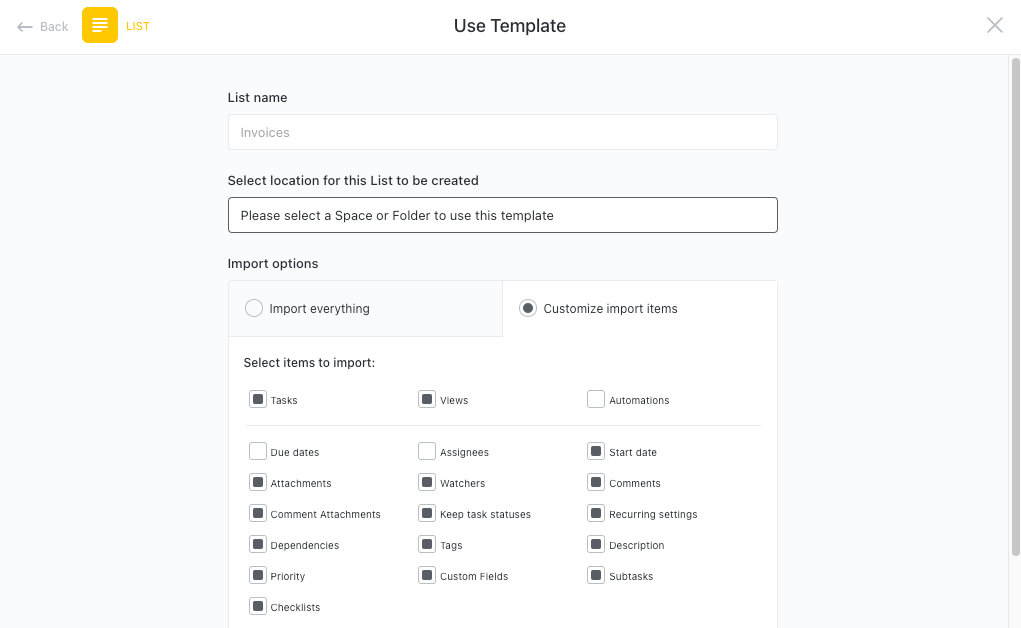Running a container shipping or logistics company comes with its fair share of risks. From delays in delivery to poor container condition, inadequate inventory management, or supplier bankruptcy, there are many potential pitfalls that can disrupt your supply chain. That's where ClickUp's Container Suppliers Risk Register Template comes in.
With this template, you can:
- Assess and mitigate risks associated with container suppliers
- Identify potential issues before they become major problems
- Keep your supply chain operations running smoothly and reliably
Whether you're a small company or a multinational corporation, ClickUp's Risk Register Template will help you stay on top of your container supplier risks and ensure the success of your logistics operations. Get started today and take control of your supply chain!
Benefits of Container Suppliers Risk Register Template
Managing risks with container suppliers is crucial for maintaining a seamless supply chain. The Container Suppliers Risk Register Template offers numerous benefits, including:
- Identifying and assessing potential risks associated with container suppliers
- Mitigating risks by implementing effective risk management strategies
- Ensuring timely delivery and maintaining the quality of containers
- Minimizing disruptions and delays in the supply chain
- Protecting against financial losses due to supplier bankruptcy
- Improving overall supply chain efficiency and reliability.
Main Elements of Container Suppliers Risk Register Template
ClickUp's Container Suppliers Risk Register Template is designed to help you effectively manage and mitigate risks associated with your container suppliers. Here are the main elements of this Folder template:
- Custom Statuses: Track the progress of each risk with 9 different statuses, including Occurred, Mitigated, and Active, allowing you to easily monitor the current state of each risk in your register.
- Custom Fields: Capture important information about each risk using 7 custom fields such as Consequence, Description, Expected Cost of Risk, Mitigation Cost, Probability, Risk Level, and Risk Response, ensuring that all relevant details are documented and easily accessible.
- Custom Views: Utilize 6 different views, including Costs of Risks, List of Risks, Risks by Status, Risks by Response, Risks by Level, and the Getting Started Guide, to gain different perspectives on your risk register and effectively analyze and manage risks.
- Risk Management Tools: Leverage ClickUp's powerful risk management tools, such as assigning tasks, setting due dates, attaching relevant documents, and creating checklists, to ensure that you have a comprehensive approach to risk mitigation and resolution.
How to Use Risk Register for Container Suppliers
Managing risk in your container supply chain is crucial to ensuring smooth operations and minimizing potential disruptions. By using the Container Suppliers Risk Register template in ClickUp and following these steps, you can effectively identify and mitigate risks associated with your suppliers.
1. Identify potential risks
Start by brainstorming and identifying potential risks that could impact your container suppliers. These risks could include delays in delivery, quality issues, financial instability, or changes in regulations. By understanding the specific risks you face, you can better prepare for them.
Use custom fields in ClickUp to categorize and prioritize the identified risks based on their severity and likelihood.
2. Gather supplier information
Collect all relevant information about your container suppliers, including their contact details, financial stability, performance history, and any certifications they hold. This information will help you assess their risk levels and make informed decisions.
Use the Table view in ClickUp to create a comprehensive database of your container suppliers and their key information.
3. Assess risk levels
Analyze each supplier's risk level based on the gathered information and the identified risks. Assign a risk score to each supplier to determine their overall risk level. Consider factors such as their financial stability, past performance, and the potential impact of their failure on your operations.
Create custom fields in ClickUp to assign risk scores and track the risk levels for each container supplier.
4. Develop risk mitigation strategies
Once you have assessed the risk levels, develop strategies to mitigate and manage the identified risks. These strategies could include diversifying your supplier base, implementing contingency plans, establishing clear communication channels, or conducting regular supplier performance reviews.
Create tasks in ClickUp to outline and assign specific risk mitigation strategies for each container supplier.
5. Monitor and review
Regularly review and monitor the performance of your container suppliers to ensure that the identified risks are being effectively managed. Keep track of any changes or incidents that may impact their risk levels and adjust your mitigation strategies accordingly.
Use Dashboards in ClickUp to track and monitor the progress of your risk mitigation efforts and identify any potential issues that need attention.
By following these steps and utilizing the Container Suppliers Risk Register template in ClickUp, you can proactively manage risks in your container supply chain and maintain smooth operations.

Get Started with ClickUp’s Container Suppliers Risk Register Template
Container shipping companies or logistics companies that rely on container suppliers can use the Container Suppliers Risk Register Template to assess and mitigate potential risks associated with container suppliers, ensuring smooth and reliable supply chain operations.
First, hit “Add Template” to sign up for ClickUp and add the template to your Workspace. Make sure you designate which Space or location in your Workspace you’d like this template applied.
Next, invite relevant members or guests to your Workspace to start collaborating.
Now you can take advantage of the full potential of this template to manage container supplier risks:
- Use the Costs of Risks View to track the financial impact of each risk
- The List of Risks View will give you a comprehensive overview of all identified risks
- The Risks by Status View will help you prioritize risks based on their current status
- The Risks by Response View will allow you to categorize risks based on the mitigation measures implemented
- The Risks by Level View will help you assess the severity of each risk
- Refer to the Getting Started Guide View to understand how to best utilize the template
- Organize risks into nine different statuses: Occurred, Mitigated, Occurred, Active, Active, Mitigated, Occurred, Active, Mitigated, to keep track of their progress
- Update statuses as you address and mitigate risks to ensure stakeholders are informed
- Monitor and analyze risks to ensure a reliable supply chain







